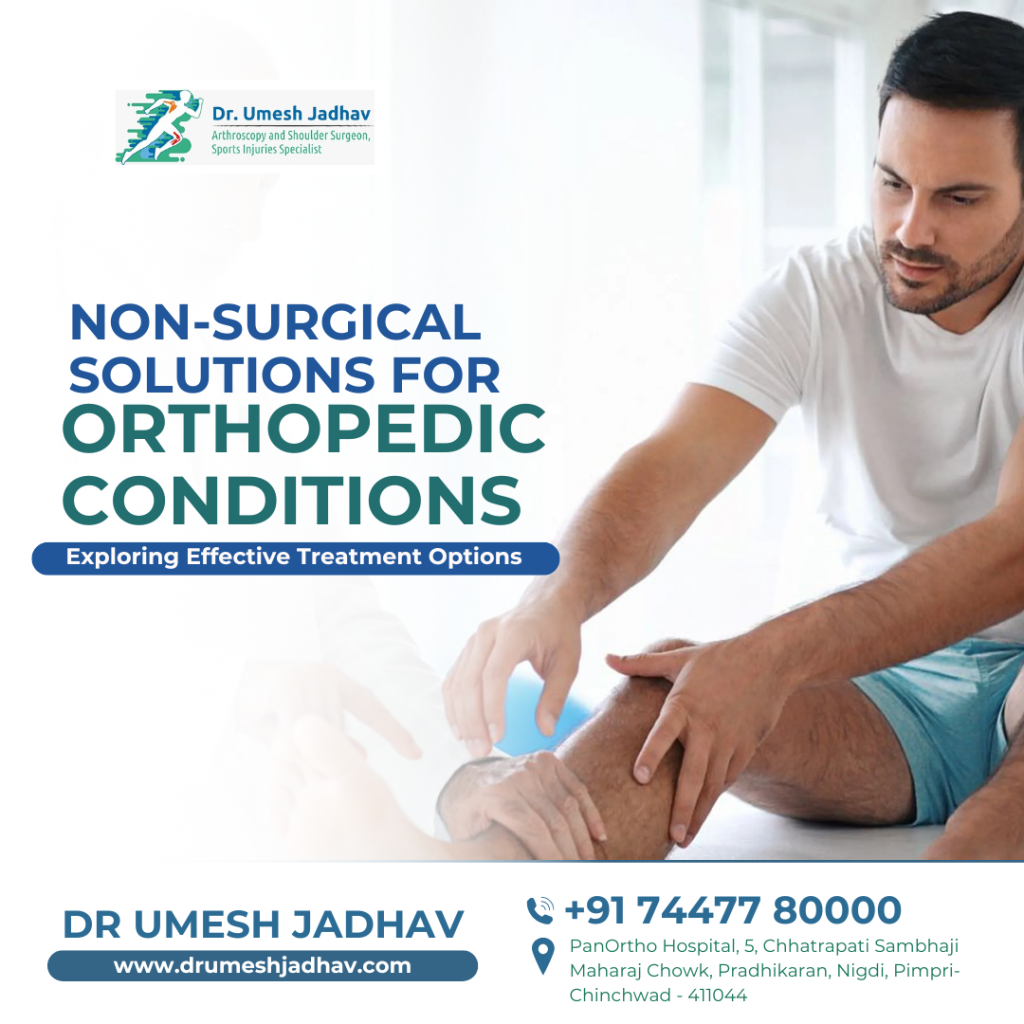Orthopedic conditions affect the muscles, bones, joints, and ligaments of the body. Whether caused by injury, aging, or overuse, these conditions can cause significant pain and limit mobility. While surgery is often considered a last resort, there are many effective non-surgical treatments that can help manage orthopedic conditions. These treatments can provide pain relief, improve function, and avoid the need for invasive procedures. Here are some of the most common non-surgical solutions for orthopedic conditions:
1. Physical Therapy
Physical therapy (PT) is one of the most widely used and effective non-surgical treatments for orthopedic issues. A licensed physical therapist creates customized exercise programs that help improve strength, flexibility, and range of motion. PT can be beneficial for conditions like arthritis, tendonitis, sports injuries, and post-surgery recovery. It helps restore function, reduce pain, and improve posture, and can even prevent future injuries by strengthening the muscles around the joints.
Key benefits:
- Reduces pain and inflammation
- Restores mobility and strength
- Enhances balance and coordination
- Prevents further injury
2. Chiropractic Care
Chiropractic treatments focus on the spine and musculoskeletal system. Chiropractors use spinal manipulation to relieve pain and improve mobility. This type of care can be especially beneficial for conditions like back pain, neck pain, sciatica, and herniated discs. Chiropractors may also recommend exercises, stretches, and lifestyle modifications to help maintain spinal health.
Key benefits:
- Reduces back and neck pain
- Improves posture and alignment
- Helps with sciatica and herniated discs
3. Medications
Over-the-counter (OTC) and prescription medications can be effective in managing pain and inflammation caused by orthopedic conditions. Nonsteroidal anti-inflammatory drugs (NSAIDs), like ibuprofen, are commonly used to alleviate pain and reduce swelling. For more severe pain, your doctor may recommend stronger medications, such as opioids or corticosteroid injections.
Key benefits:
- Quick relief from pain and inflammation
- Effective for acute injuries and chronic conditions
- Available in various forms (oral, topical, injections)
4. Corticosteroid Injections
Corticosteroid injections are commonly used to treat conditions like arthritis, tendinitis, and bursitis. These injections deliver anti-inflammatory medication directly into the affected joint, helping to reduce pain and swelling. In some cases, they can provide long-lasting relief. However, due to potential side effects, they are typically used sparingly.
Key benefits:
- Provides targeted relief for joint pain
- Fast-acting and effective for inflammation
- May offer long-term pain relief
5. Platelet-Rich Plasma (PRP) Therapy
PRP therapy involves extracting a small amount of the patient’s blood, processing it to concentrate the platelets, and then injecting it into the injured area. Platelets contain growth factors that promote healing and tissue regeneration. This treatment is commonly used for conditions like tendon injuries, osteoarthritis, and ligament sprains.
Key benefits:
- Accelerates healing by stimulating tissue repair
- Reduces inflammation
- Minimally invasive with a short recovery time
6. Stem Cell Therapy
Stem cell therapy is a cutting-edge treatment that uses stem cells (often derived from bone marrow or fat tissue) to help regenerate damaged tissues. For orthopedic conditions like joint degeneration, ligament injuries, or cartilage damage, stem cell injections can promote healing and tissue repair. While still a relatively new field, early research shows promising results in treating chronic orthopedic conditions without the need for surgery.
Key benefits:
- Stimulates tissue regeneration and healing
- Non-invasive with minimal recovery time
- Potential for long-term improvement in joint function
7. Braces and Supports
Braces, splints, and supports can provide relief and stability for orthopedic conditions. These devices help to immobilize a joint, reduce strain on muscles and ligaments, and support proper alignment. Braces are commonly used for conditions like sprains, strains, arthritis, and post-injury recovery.
Key benefits:
- Provides support and stability to joints
- Reduces pain during movement
- Aids in recovery and prevents further injury
8. Heat and Cold Therapy
Heat and cold therapy are simple yet effective treatments for pain relief. Cold therapy (ice packs) can help reduce inflammation and numb sharp pain, making it ideal for acute injuries like sprains or strains. Heat therapy (such as heating pads) helps relax muscles, improve circulation, and alleviate stiffness, making it useful for chronic conditions like arthritis.
Key benefits:
- Quick, non-invasive pain relief
- Reduces inflammation (cold therapy)
- Eases muscle stiffness and tension (heat therapy)
9. Massage Therapy
Massage therapy can be an effective complementary treatment for many orthopedic conditions, particularly those involving muscle pain, tension, and stiffness. Therapeutic massage can improve circulation, reduce muscle spasms, and promote relaxation. It is commonly used in the treatment of back pain, neck pain, and soft tissue injuries.
Key benefits:
- Relieves muscle tension and tightness
- Improves circulation and flexibility
- Reduces stress and promotes relaxation
10. Lifestyle Modifications
Adopting a healthier lifestyle can greatly improve the management of orthopedic conditions. Maintaining a healthy weight reduces strain on weight-bearing joints like the knees and hips. Regular exercise, a balanced diet, and avoiding repetitive movements can prevent the worsening of orthopedic conditions and even promote healing. For conditions like osteoarthritis, low-impact activities such as swimming, cycling, and walking are often recommended.
Key benefits:
- Prevents further damage to joints and tissues
- Promotes overall health and mobility
- Supports long-term recovery and pain management
Conclusion
Non-surgical treatments for orthopedic conditions offer a wide range of solutions to alleviate pain, promote healing, and improve function. Whether it’s through physical therapy, medications, injections, or lifestyle changes, many individuals can find relief without the need for surgery. It is always best to consult with a healthcare professional to determine the most appropriate treatment plan for your specific condition. Dr. Umesh Jadhav, an orthopedic specialist in Nigdi, PCMC, emphasizes that a personalized, non-invasive approach can often provide long-term relief and enhance quality of life. By taking proactive steps with non-surgical solutions, you can manage pain, regain mobility, and improve your overall well-being.

